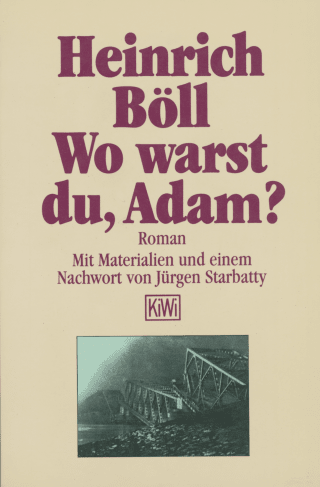In this early novella Heinrich Böll depicts the war as an illness. So it is only logical that he did not want to describe the mechanisms of a battle but instead focused on the individual. Böll starts with a detail and from there opens up the whole panorama. He draws his characters, privates and generals, SS leaders and hounded Jews, women and girls in the hinterland without distortions or idealizations.
Many books have been written against the war. But not all were understood. Without intending it, they allowed for an explanation or even a fascination for the horror and destructive violence of war. Böll’s novel is unambiguous. For example the story of a crew guarding a bridge that has been blown up by partisans to be rebuild by Germans to be blown up again by the approaching Russians, exemplifies the organized pointlessness of war more clearly than any gruesome panorama of a battle scene.

